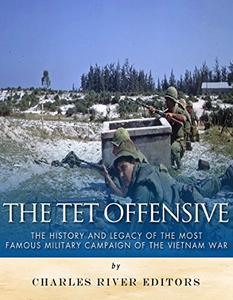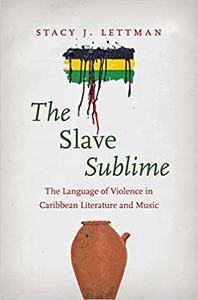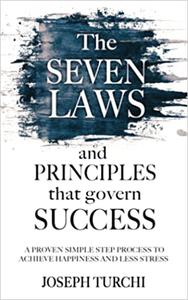 The Tet Offensive: The History and Legacy of the Most Famous Military Campaign of the Vietnam War by Charles River Editors
The Tet Offensive: The History and Legacy of the Most Famous Military Campaign of the Vietnam War by Charles River EditorsEnglish | August 4, 2015 | ISBN: 1515341380 | 88 pages | EPUB | 2.78 Mb
*Includes pictures *Includes accounts of the fighting written by generals, soldiers, and journalists *Includes online resources and a bibliography for further reading *Includes a table of contents "We have been too often disappointed by the optimism of the American leaders, both in Vietnam and Washington, to have faith any longer in the silver linings they find in the darkest clouds...we are mired in a stalemate that could only be ended by negotiation, not victory." - Walter Cronkite, February 27, 1968 Before the Vietnam War, most Americans would have been hard pressed to locate Vietnam on a map. South Vietnamese President Diem's regime was extremely unpopular, and war broke out between Communist North Vietnam and South Vietnam around the end of the 1950s. Kennedy's administration tried to prop up the South Vietnamese with training and assistance, but the South Vietnamese military was feeble. A month before his death, Kennedy signed a presidential directive withdrawing 1,000 American personnel, and shortly after Kennedy's assassination, new President Lyndon B. Johnson reversed course, instead opting to expand American assistance to South Vietnam. Over the next few years, the American military commitment to South Vietnam grew dramatically, and the war effort became both deeper and more complex. The strategy included parallel efforts to strengthen the economic and political foundations of the South Vietnamese regime, to root out the Viet Cong guerrilla insurgency in the south, combat the more conventional North Vietnamese Army (NVA) near the Demilitarized Zone between north and south, and bomb military and industrial targets in North Vietnam itself. In public, American military officials and members of the Johnson administration stressed their tactical successes and offered rosy predictions; speaking before the National Press Club in November 1967, General Westmoreland claimed, "I have never been more encouraged in the four years that I have been in Vietnam. We are making real progress...I am absolutely certain that whereas in 1965 the enemy was winning, today he is certainly losing." (New York Times, November 22, 1967). Early in 1968, a massive coordinated Viet Cong operation - the Tet Offensive - briefly paralyzed American and South Vietnamese forces across the country, threatening even the American embassy compound in Saigon. With this, the smiling mask slipped even further, inflaming the burgeoning antiwar movement. Although American soldiers didn't lose a battle strategically during the campaign, the Tet Offensive made President Johnson non-credible and historically unpopular, to the extent that he did not run for reelection in 1968. Nearly 50 years after the campaign, the Tet Offensive continues to inspire impassioned and occasionally bitter debate among historians, military officers, government officials, veterans, journalists, and the public at large. Was the large-scale Communist assault a strategic masterstroke that demolished American popular support for the war effort? Was it a catastrophic misstep that effectively broke the back of the Viet Cong guerrilla forces in South Vietnam? Did Tet expose the Johnson administration's optimistic pronouncements as a deliberate pattern of lies and obfuscations designed to mislead the American public about the true nature of the war? Or did anti-war elements in the news media betray their public trust by mischaracterizing a substantial American victory as a shocking and catastrophic defeat? In the words of the historian Richard Falk, the Tet Offensive "remains a mirror for restating opposed preconceptions and validating contending ideological biases." (Falk, 11). Perhaps the only proposition to win universal agreement is that the Tet Offensive represented a significant turning point. The conflict in Vietnam would continue for years after Tet, but it would never be the same.



![S.T.A.L.K.E.R. 2 / STALKER 2: Heart of Chornobyl - Ultimate Edition (2024) [+UPDATE 23.12.2024 - v1.1.3] ElAmigos / Polska wersja językowa](https://i.postimg.cc/Zqd8RWGY/UZG8PBE.jpg)



















































![David Gilmour - Luck and Strange (2024) [FLAC]](https://i.imgur.com/everaBc.jpeg)
![Męskie Granie Orkiestra - Męskie Granie 2024 (2024) [FLAC]](https://i.imgur.com/FAyOxrM.jpeg)
![The Rolling Stones - Hackney Diamonds (2023) [FLAC]](https://i.imgur.com/wCkyyUN.jpg)
![Lady Gaga - Harlequin (2024) [FLAC]](https://i.imgur.com/dcgIA8D.jpeg)
![Natalia Kukulska - Dobrostan (2024) [FLAC]](https://i.imgur.com/bdljG3O.jpeg)
![Kaśka Sochacka - Ta druga (2024) [FLAC]](https://i.imgur.com/hORQKvn.jpeg)
![Kuba Sienkiewicz - Pani Bóg (2024) [FLAC]](https://i.imgur.com/qijCx8Z.jpeg)
![Lanberry - Heca (2024) [FLAC]](https://i.imgur.com/8P7QfeR.jpeg)
![Sara James - PLAYHOUSE (2024) [FLAC]](https://i.imgur.com/m4f8OKg.jpeg)
![Grzegorz Hyży - EPILOG (2024) [FLAC]](https://i.imgur.com/8DA2sBr.jpeg)
![Myslovitz - WIECZORAMI CHŁOPCY WYCHODZĄ NA ULICE (2024) [FLAC]](https://i.imgur.com/l9mMtIG.jpeg)
![Krzysztof Zalewski - ZGŁOWY (2024) [FLAC]](https://i.imgur.com/vh48RAc.jpeg)
![Krzysztof Cugowski - Wiek to tylko liczba (2024) [FLAC]](https://i.imgur.com/SBzgqe2.jpeg)
![Nosowska - Kasia i Błażej (2024) [FLAC]](https://i.imgur.com/mObvVXQ.jpeg)
![sanah - Pianinkowe Kaprysy (2024) [FLAC]](https://i.imgur.com/pVjjPAa.jpeg)
![Kwiat Jabłoni - Pokaz slajdów (2023) [FLAC]](https://i.imgur.com/diERHfZ.jpg)
![Robert Cichy - Spacer po Warszawie (2024) [FLAC]](https://i.imgur.com/ixleU9o.jpeg)
![Viki Gabor - Terminal 3 (2024) [FLAC]](https://i.imgur.com/Q1KCnDs.jpeg)
![Sanah - Kaprysy (2024) [FLAC]](https://i.imgur.com/71OZm4h.jpeg)
![Męskie Granie Orkiestra - Męskie Granie 2023 (2023) [FLAC]](https://i.imgur.com/U4YHo8d.jpg)




